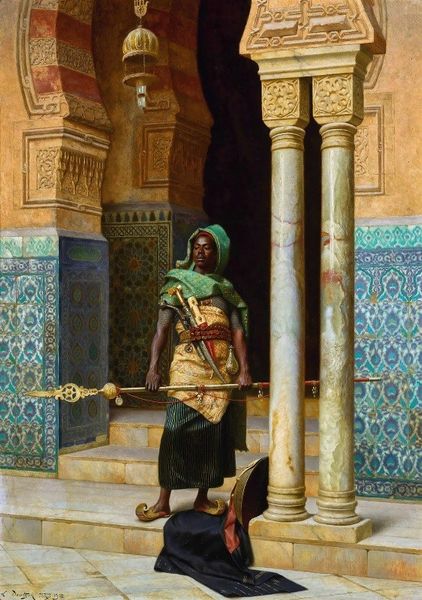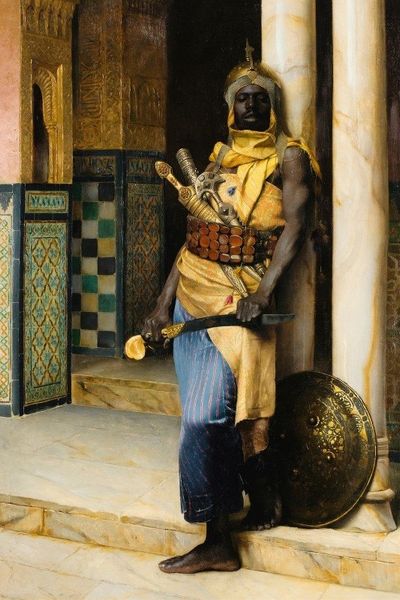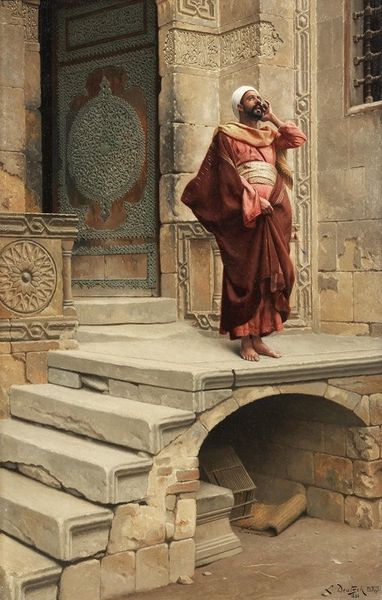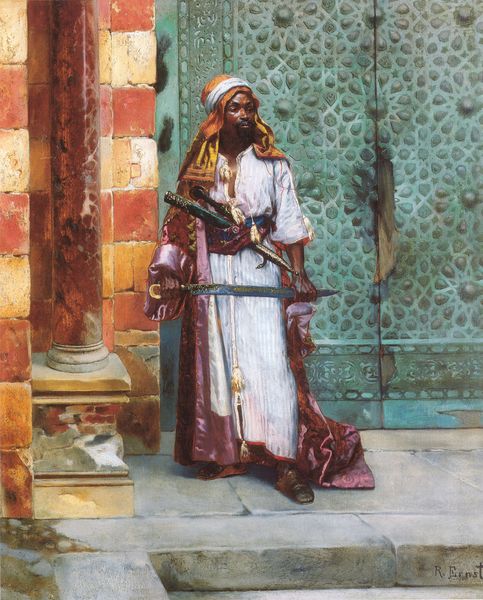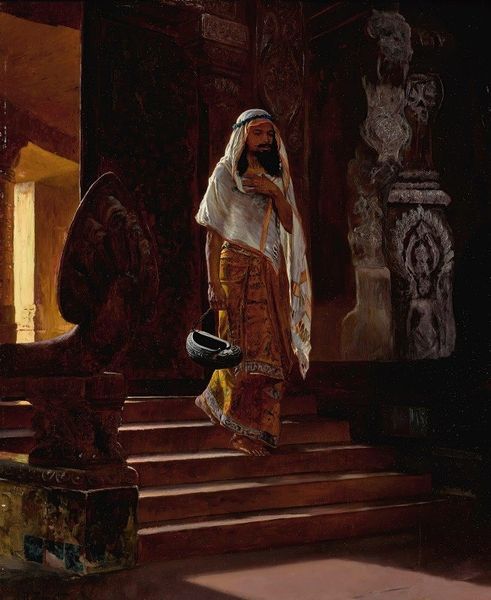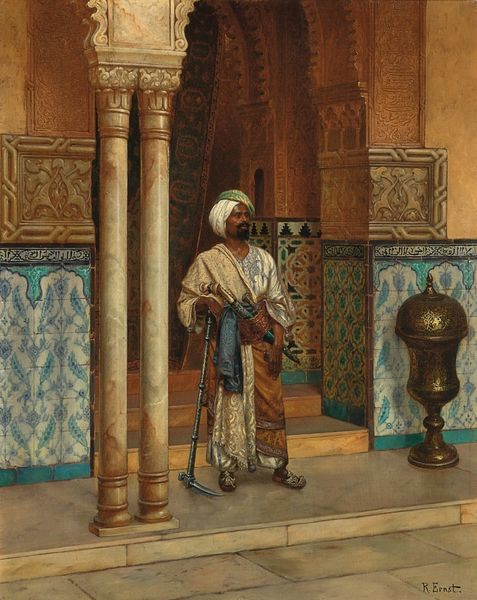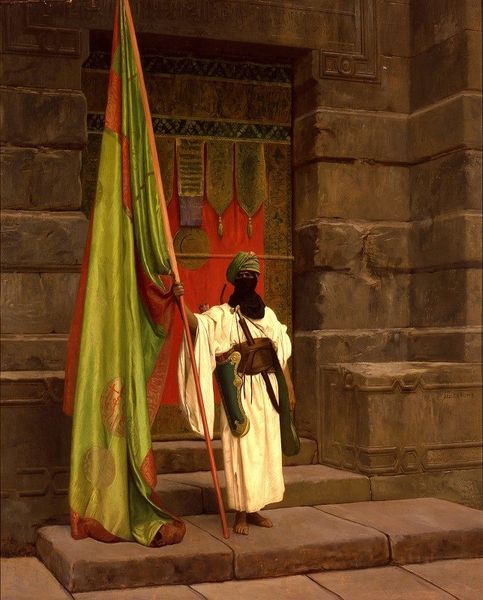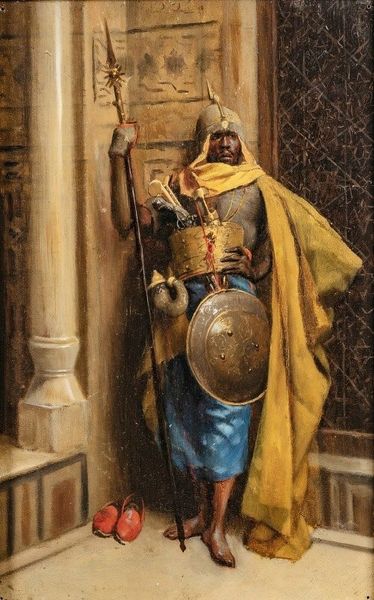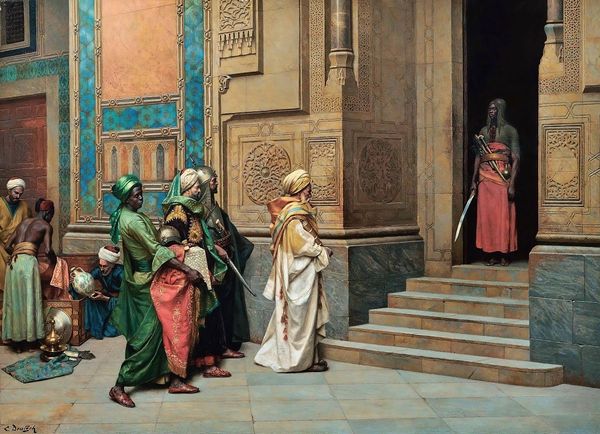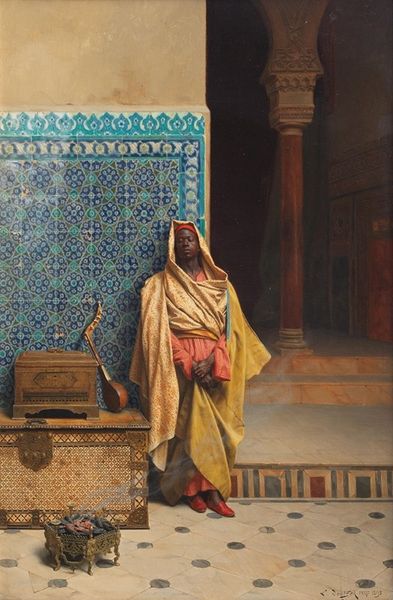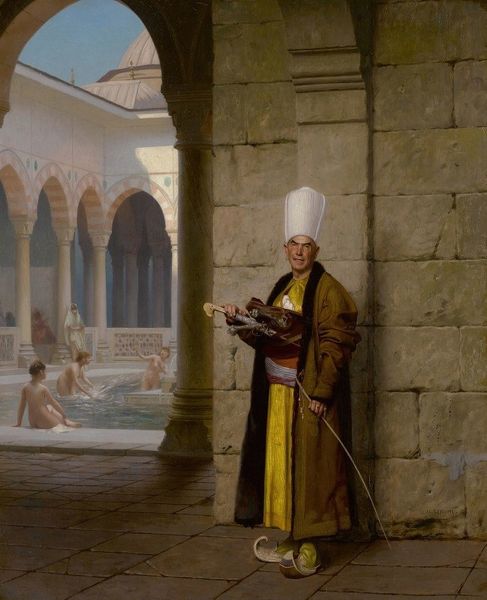
painting, oil-paint
#
portrait
#
figurative
#
painting
#
oil-paint
#
classical-realism
#
figuration
#
orientalism
#
islamic-art
#
genre-painting
#
history-painting
#
academic-art
Copyright: Public Domain: Artvee
Curator: Looking at "A Nubian Guard" crafted by Ludwig Deutsch in 1895 using oil paint, one immediately recognizes the hallmarks of Academic Orientalism. Editor: The details jump out! I see the sharp glint of polished metal, a stillness suggesting both power and patience – and something almost… mournful? The colors, though vibrant, are strangely muted. Curator: Precisely. Deutsch, though Austrian, gained fame for his meticulous depictions of the Middle East and North Africa. We have to address the power dynamics at play. What does it mean for a European artist to represent a figure like this Nubian Guard? What stories are told, and perhaps, left untold? It certainly invites a contemporary reading through a postcolonial lens. Editor: Absolutely. The uniform alone—that distinctive helmet, the scimitar—carries a weight of history, possibly referencing specific military traditions and the guard's status within the social structure. Symbols speak volumes. His foot placed squarely on discarded fabric is especially striking—it implies a suppressed narrative. Curator: And the very title, "A Nubian Guard," speaks to a certain... generalization. Nubia itself carries its own layered past, particularly concerning slavery, even while being romanticized within European culture as an ancient land of great power. Deutsch taps into those Orientalist themes, feeding into both fantasy and colonial desires. How can we address that tension, the simultaneous allure and subjugation present within the painting? Editor: These layers demand a broader look at Academic Orientalism. Its purpose within its original sociopolitical contexts, its impact, and, how later cultural studies helps unravel it and to explore the power relations at play, to decipher meanings behind visual culture. In doing so we’re better positioned to consider and critique its representational choices, the omissions, and implicit messages contained. It offers so much to deconstruct. Curator: Ultimately, the painting, though technically stunning, is a complex cultural artifact, an open invitation for viewers to examine its multifaceted relationship to history and identity. Editor: Indeed, Deutsch's guard, so beautifully rendered, acts as a starting point— a focal point to unpack so many fascinating cultural symbols and their endurance.
Comments
No comments
Be the first to comment and join the conversation on the ultimate creative platform.
